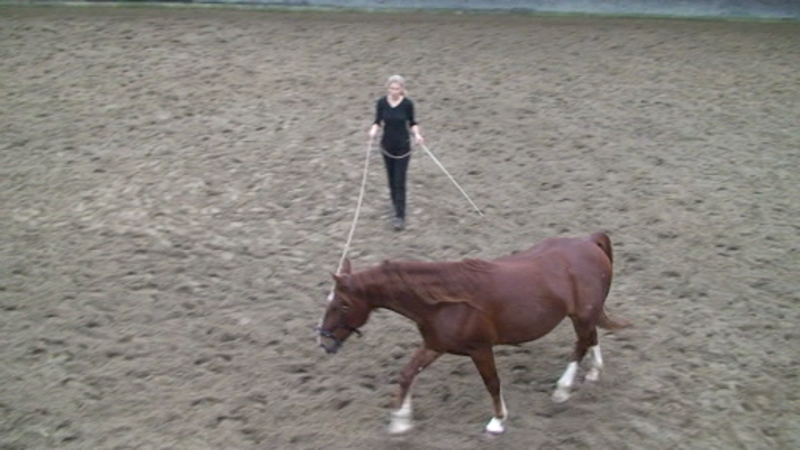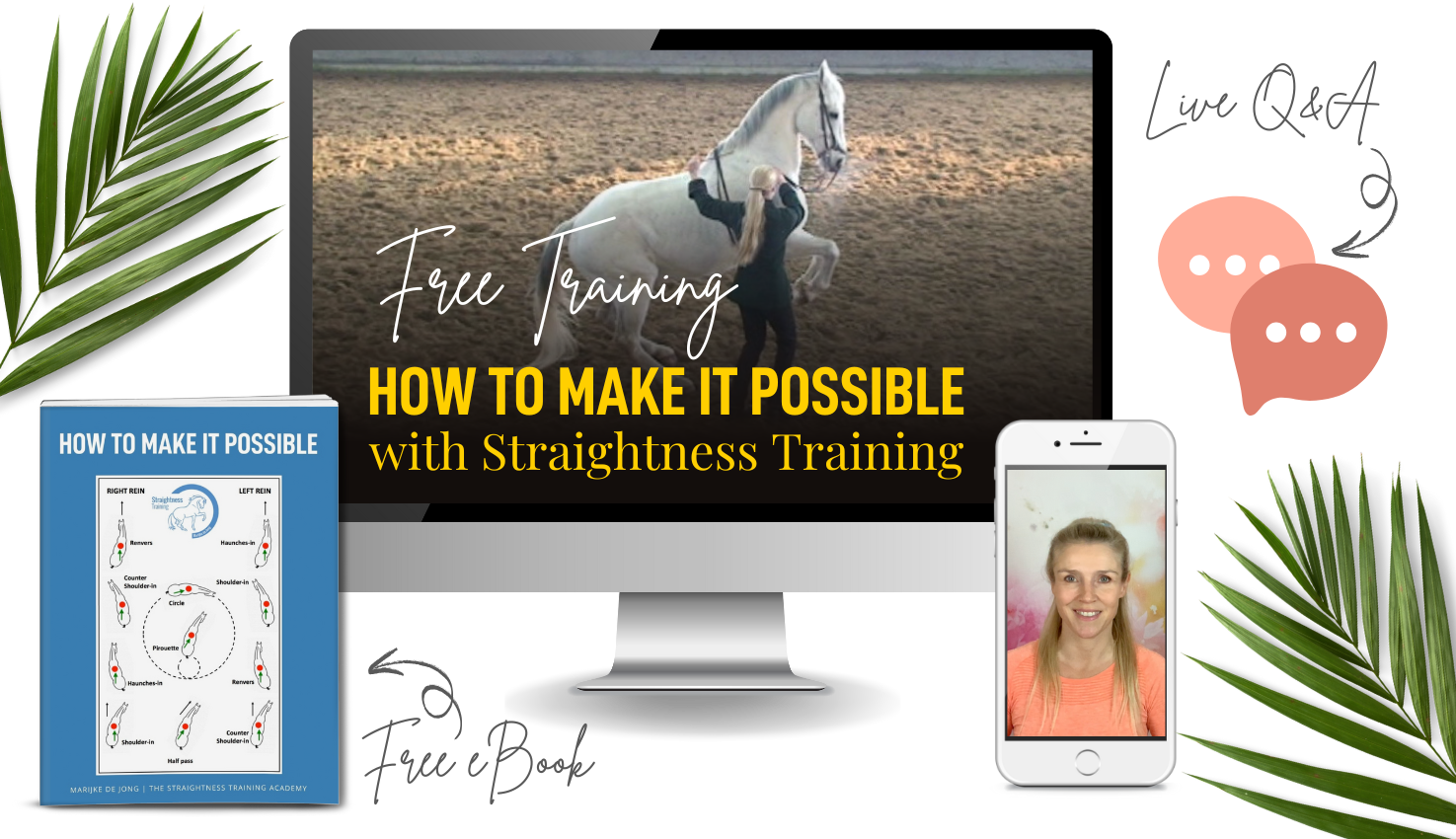
Longeing
Longeing is also an important training pillar of Straightness Training
When your horse is well prepared thanks to groundwork, longeing is the next step.
Longeing consists of different exercises.
The end result of performing these longeing exercises is a well-moving horse prepared for riding.
Read more about the different longeing exercises and the 14 characteristics of a well-moving horse in this article.

Why longeing?
It is important to spend a lot of time doing longeing exercises before riding your horse. Like a rough diamond that first needs to be polished, the young horse first needs to be ‘suppled up’ on the longe. In this time the horse can build up its fitness, develop its muscles and find balance in all gaits. Those who invest this extra time in longeing in the first few months of training will be rewarded throughout the horse’s education.
The goal of longeing is to exercise the horse on both reins. The horse is asked to walk with lateral bending while placing its inside hoof under the center of mass. Because of the stretched outside muscles, the horse releases tension in its back and moves in a forward-down position.

Central theme: LFS
The structural theme in longeing are the first 3 keys of straightness training:

1.Lateral bending
The horse on the circle must bend evenly in its body. When the horse has found the proper lateral bending, the circle will be perfectly round.
2. Stepping under
With a correct bending of the body, the inside hip will come forward, thus making the inside leg move forward under the point of weight.
3. Forward down
When the horse bends laterally, the back muscles are relaxed. This makes the horse lower its head and the neck is relaxed, forward down.

On both reins, the horse is asked to walk with correct lateral bending, which makes it release its back muscles. Also, it brings forward the inside hip so that the inside hind leg can step under the point of weight. This is done in walk, trot and canter. When the horse has learned to move with these three elements –LFS- on the longe, you will have made a great step forward in the education of the horse.
When the LFS is correct, the horse moves in a balanced way and with a correct forward-down position of head and neck. This makes the use of side-reins unnecessary.

Exercises
Longeing is done using a cavesson and a longe line. The line is attached to the middle ring of the cavesson.
On the longe, the horse will start with the familiar groundwork exercises and than teach the horse some new exercises:
1. Forward-down at a stand still
The first groundwork exercise we present the horse is to bring its head and neck forward-down. Every longeing session you start with this exercise, also with an advanced horse. You can check very easy how the horse’s stiffness and suppleness is and you can relax the horse.
2. Stelling & bending at a stand still
In the second groundwork exercise, stelling and bending is asked of the horse. You can read more about these first two exercises in the section Groundwork.
3. LFS in hand
The third exercise is to ask the horse to move on a circle with correct lateral bending, a forward-down position of head and neck and a hind leg that steps under. While in this exercise, stelling is asked through the cavesson, and at the same time, the head is asked forward down. Wth a very gentle tap of the whip you can activate the inside hind leg to step under in the moment the hind leg is in the air.
4. LFS on the bigger circle
After the horse has learned through the first three exercises to step under, walk forward down and maintain the correct bending, it can now be taught to walk further away from the trainer on a bigger circle.
5. Other exercises
When your horse can maintain the LFS in walk, it can be asked to do this in trot and in canter. When the horse can maintain the LFS in all three gaits, non-progressive transitions such as from stop to trot and from canter to walk can be executed.

In longing, we can teach our horse the following exercises:
- Basic transitions such as walk-trot, trot-canter
- Speeding up and slowing down within a gait
- Stop
- Transitions such as stop-trot, canter-walk
- Changing the lead through the circle (by making a S over the middle)

6. Collection
Once our horse has learned all exercises and masters the six keys of Straightness Training, we can also develop collection on the longe:
14 Characteristics of a well-moving horse
The end result of correct longe work is a well-moving horse prepared for riding. A well-moving horse has the following characteristics:
- Bends equally from head to tail and yields easily to the pressure of the longe.
- Has a forward-down tendency in its head and neck.
- Steps under its point of weight with its inside hind leg.
- Moves in a balanced way, with a horizontal equilibrium.
- Moves in a supple and relaxed manner.
- Moves equally well to the left and to the right.
- Moves with a controlled speed.
- Moves fluently.
- Moves lightly.
- Moves with a clean rhythm and tact. In walk the horse has a clean four-beat tact, in trot a clean two-beat and in canter a clean three-beat.
- Moves regularly: the time and length of each step is the same.
- Has a relaxed tail.
- Has a friendly moving of the ears, the inside ear is focused on the longeur.
- Has a satisfied, friendly and relaxed look in its eyes.
Longe frequently with the saddle. When the horse has mastered all longing exercises, gained better fitness and muscles, and is well-moving, the riding training can then begin.

Links to Related and Recommended Articles
- How to go from Groundwork to Longeing »
- Do I need a cavesson? »
- Impulsion & Schwung »
- How to deal with imperfect conditions? »

